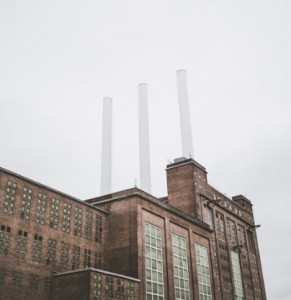Many cities around the world have an interesting industrial history. Some were once hotspots for activity, with massive factories making all kinds of goods. Many also had large warehouses to store raw materials and final products ready for shipping. These pieces of commercial architecture were a major part of the landscape.
However, in time things can change rapidly. As cities and economies develop, they move away from the act of physically making goods. Instead they tend to focus on the service industry instead. Manufacturing moves to different areas where wages are lower. Sometimes the drive is from people who live in the area who want operations to move to address the noise and pollution they cause. Either way, it can leave once vibrant commercial buildings empty.
Deterioration
 The problem here is in many cases old factories and warehouses remain empty for a long time. It results in the buildings deteriorating and becoming a blight on the landscape. In some situations it can make the entire area around them dangerous, attracting crime and anti-social behaviour.
The problem here is in many cases old factories and warehouses remain empty for a long time. It results in the buildings deteriorating and becoming a blight on the landscape. In some situations it can make the entire area around them dangerous, attracting crime and anti-social behaviour.
Luckily, creative projects can give new life to these buildings. The best ones can preserve the history and heritage while also allowing buildings to return to use. For example, they may preserve key pieces of the architecture. They can then add more modern pieces to create a blend of old and new.
Impressively, projects like this have the power to take the old commercial architecture and transform the local area. It can create new thriving spaces for various businesses and other stakeholders. Some redevelopments create housing too.
Creating new offices
One of the most common ideas to redevelop old factories and warehouses is to create offices. These buildings tend to have a lot of potential because of the size and scale. Most have simple interiors, generally just large spaces. So, it can be relatively easy to reimagine and rework the space.
There are several great examples of this kind of project around the world. The Domino Sugar Refinery in Brooklyn, US is an interesting one. Another is the Ombú in Madrid, Spain.
Mixed use developments
Another option for old factories and warehouses is to convert them for a mix of uses. Thanks to the dimensions and characteristics of some properties, they can satisfy multiple uses after renovation. This can include offices, restaurants, galleries, hotels, and even housing.
One of the most famous examples of this kind of project is Battersea Power Station in London, UK. The building is iconic and a beloved relic of the industrial history of the city. The project has retained important features like the chimneys and turbine halls. However, the property is now home to retail galleries, offices, restaurants, event spaces, and housing.
Cultural uses
A final option is to transform old commercial architecture like factories and warehouses into new spaces to celebrate the area. These buildings could be fantastic for different cultural uses, including art galleries, museums, theatres, and performance spaces.
The Argo Contemporary Art Museum & Cultural Centre in Teheran, Iran is a good example here. It was a beer distillery in the 1920s. However, today it is a hotspot for culture, with galleries, a library, artist residency, and much more.
Do you need help with old commercial architecture?
The key thing with redeveloping old factories and warehouses is to see the potential of what they could become. While they may have been built for commercial uses, a creative outlook could adapt them for many other needs. In some cases it can be a mix of uses and can regenerate a whole area.
Coffey Architects is a team you can rely on for these kinds of projects. The scale is no concern to us; in fact, we can take advantage of it to make the redevelopments incredibly rewarding. So, contact us today and let us know about the property you are looking to transform.